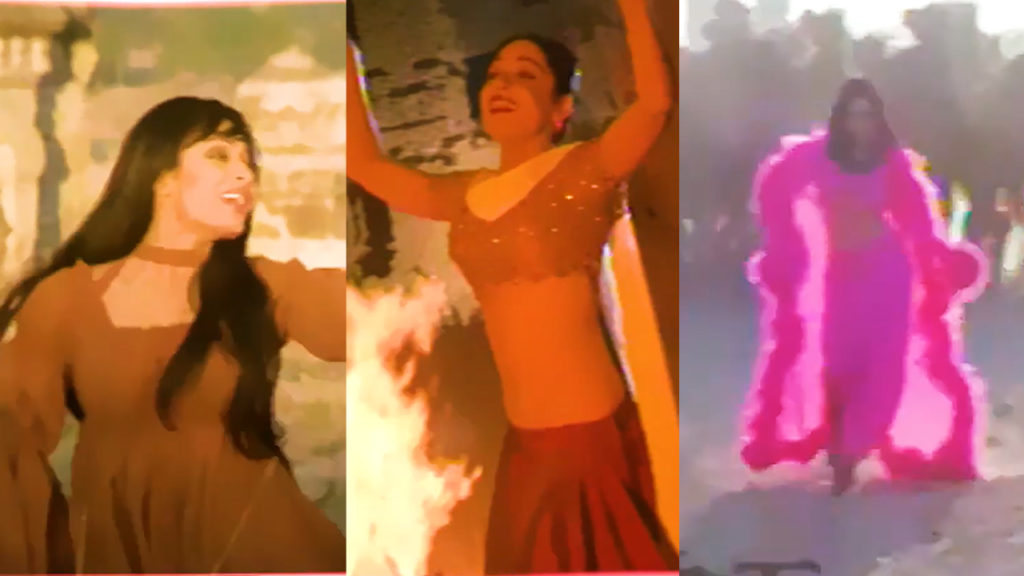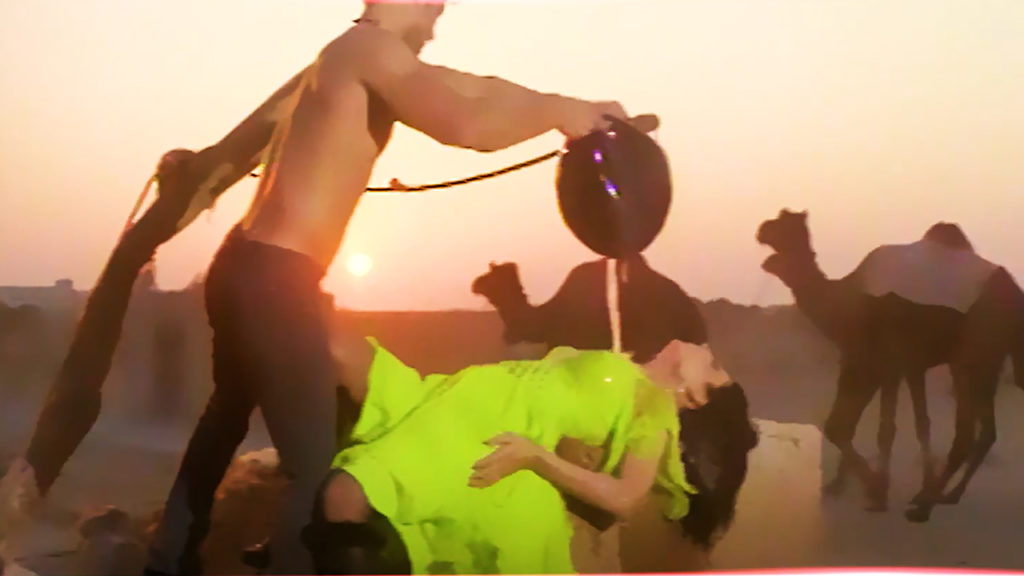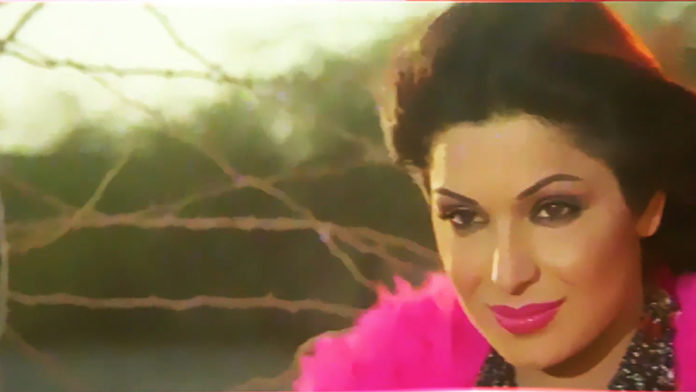The cinema of the ’90s, despite its shortcomings, had its few peculiar yet attractive features that are hardly reproduced in the current new age Pakistani cinema. The fact that films from the ’90s in Pakistani cinema managed to maintain a larger than life image despite being low on the budget as compared to today, is something that a lot of die-hard Lollywood fans still cherish.
From cinematography to two sets and costume designing, the body language of actors and their on and off-screen personas in the Lollywood of nineties, the characteristics could still act as templates for the current cinema creators to achieve the aura that a local film buff would expect from a silver screen product in order to have a fulfilling cinematic experience.
Recently, a song from a Lollywood hit of the yesteryears, ‘Salakhein’, featuring the rockstar entertainers of local cinema, Meera Jee and Ahmed Butt resurfaced on our Youtube feed. The song is picturised on an expensive palette that was probably never seen before in a Pakistani film; from the lush green fields in Punjab to the desert of Cholistan and the barren mountains of Skardu, the song features every possible topography we as geography students have studied in our textbooks.
But that is not all. The heroine “Miss Meera Jee” is found to have a myriad of outfits in the song as we can see in the song ‘Sunehri Shaam‘ where it seems like she’s wearing a new outfit on each beat. Her wardrobe encompasses a mix of western as well as eastern outfits and anything that comes in between the spectrum. It’s safe to say that these outfits were quite different and “bold” for their time.

We were quite surprised to see the countless number of outfits in this song pictured on the glamorous Meera. According to our count, Meera changed into seventeen outfits. Yes, seventeen! It was normal to see a vast wardrobe for one song in a movie back in those days. But the maximum for a star as big as Meera was about twelve to fourteen. Such songs in the ’90s used to be a special feature of films with bigger budgets and the more the number of costumes and shifts in which a song would be picturised, the more value it would add to the film. Songs from a Punjabi film ‘Mohabbatan Sachian‘ by the same director feature Lollywood actress Veena Malik change her outfit with every possible beat. However, Veena’s outfits aren’t as diverse as Meera’s. Seeing seventeen for Meera came as a surprise to us, though we did thoroughly enjoy each of them.
Our favourites
Yes, some of the outfits may be considered “bold” but oh did Meera do them justice! From glamorous cultural outfits to minimalistic western ones, Meera has rocked almost every look from this song. What’s brilliant is how her hair and makeup for each outfit was different and perfectly matched. Lets take into account one of our top listers; a brown dress with a halter neck paired with sleek straight hair. This look shows minimalism at its best!
Another séduisant is that bright pink three-piece outfit. A short crop top paired with a slim-fitting pencil skirt to perfectly showcase her silhouette, with a sheer long cover which has the same coloured feathers on its borders. One can’t seem to take their eyes off of Meera when she’s walking towards the camera in this one particular shot.
In contrast, we see Meera flaunting her desi side with an elegant lehnga-choli and a slim dupatta carried in her neck. Her hairstyle in particular is matched perfectly with this outfit; a long braid which seems is derived by the help of what we call a parandah (an artificial braid used to elongate the natural hair braid).

A similar song by Sangeeta was picturised on the Lollywoody diva “Resham Jee” in nine different shifts, although the entire song was shot indoors and the song itself was not as catchy as ‘Sunehri Shaam’ from the movie ‘Salakhein’ in audiovisual terms.
Meera’s co-star Ahmad Butt, a former Lux Style Award winner for the best model, launched to the cinema world with his debut film ‘Salakhein‘, is no exception to wardrobe galore. He, however, also gets to show off his shredded body every now and then in the song.
Attention to detail
The song comes at a tense point in the film’s narrative and serves not only as a visual treat but also lessens the tension in the narrative by exploring the explosive romance in the two leads in a steamy way. From the director Shehzad Rafique and producer Rashid Khawaja to costume designer, choreographer, and the actors, everyone deserves a special mention for going the extra mile in producing a video that still manages to get us glued to our screens and holds us in peculiar awe.
While talking to us regarding the picturisation of ‘Sunehri Shaam’, the producer of the song Rashid Khawaja said that the song was a tough task to shoot at that time, the production crew consisted of more than fifty people and would travel to different cities of Pakistan across its length to especially shoot a few sequences of the song.

Rashid Khawaja, in his earlier productions like ‘Very Good Duniya Very Bad Log’ and ‘Jo Dar Gya Wo Mar Gya’ had a knack for picturising songs at exotic locations with large crews and would sometimes hire Indian choreographers. That obviously would skyrocket the production costs of the films where the budget of one song would reach the cost of the entire film.
According to Rashid Khawaja, one of the reasons the current producers and investors are reluctant to invest in their films and their songs is the unhealthy monetary practices rampant in the local cinema industry. The producers would have to wait for an enormous amount of time and make extra efforts in order to ensure they get their profits/investment back irrespective of their films being a box office success.
‘Sunehri Shaam’ from Salakhein is not only a visual treat but it also serves as a source of introspection for Pakistani cinema stakeholders where it demands them to rectify monetary as well creative practices to ensure the healthy flow of cinema; a cinema that’s not just entertaining but and larger than life to be cherished later.




